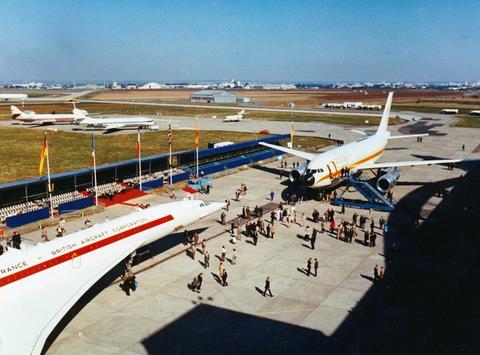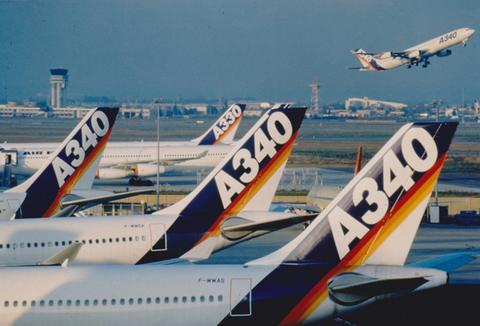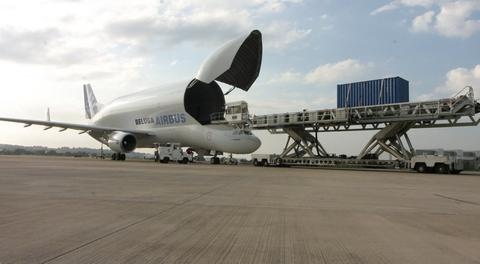Since the early A300s, all Airbus aircraft had undergone their final assembly Toulouse, with cabin installation carried out in Hamburg. But after the launch in November, 1989, of the 186-seat A321, the stretch version of the A320, it emerged that this tradition was to be broken. Final assembly and interior-fitting of this aircraft, Airbus announced, would take place in Hamburg.
Subsequent members of the A320 Family launched in the following years would also be assembled and outfitted in Hamburg, while final assembly of the A320, A300-600 and A310 would remain in Toulouse. Both final assembly and interior-fitting of the A330 and A340 would be done in Toulouse. Airbus said the integration of final assembly and cabin installation at the same site would improve efficiency and reduce lead-times.
Sales of Airbus aircraft, buoyed by the A320, were going well when the first Gulf War broke out in January, 1991. A dramatic slump in the number of people flying followed. Airlines cancelled orders for new aircraft, making their existing fleets last longer. As fears for future profitability grew, confidence withered.
Like every aircraft manufacturer, Airbus suffered in what the industry referred to as “the downturn”. Yet, despite the gloomy economic climate, Airbus doggedly persisted with its expansion of the A320 Family in the belief that downturns end and demand would return – a brave decision which would pay huge rewards. In March 1993, came the first flight of the A321, followed three months later by the launch of the 124-seat A319. (The so-called “baby” of the family, the 107-seat A318, would be launched several years later.)
By offering such a comprehensive range of the most advanced passenger aircraft possible, Airbus was giving its customers the opportunity to build a fleet with maximum flexibility. Thanks to fly-by-wire commonality, an airline could operate Airbus aircraft across the whole range of sectors, from short-haul to ultra long-haul, switching cross-qualified pilots and crews according to need at short notice. Maintenance costs were also lower, a significant benefit to operators.
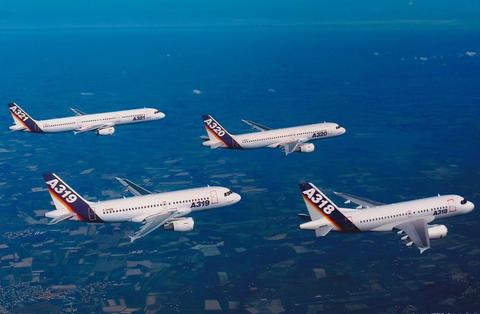
Airbus’ A320 Family is the world's best-selling single-aisle product line.
In the black
In 1991, Jean Pierson, in a lecture to management consultants in Britain, revealed that Airbus had made its first operating profit the previous year.
He also spoke of the Airbus achievement: “Airbus Industrie stands as a symbol of what Europe can accomplish when it combines its forces around a common project….It stands today as the only recourse against a monopoly of the civil aerospace industry by US manufacturers. Our products come in over one hundred different colours – the colours of our customers around the world. That is the real commercial power that is back in European hands.”
In the same lecture, Pierson paid tribute to those who had invested in Airbus knowing that it would take years before they saw a return because “in so doing they generated wealth in Europe, the wealth that comes from skills retention, employment and career opportunities, import substitution, export earnings.”
And he made a forceful rallying cry for the multicultural spirit of Airbus which summed up the organisation’s essence from its beginnings to the present day: “The determination of the partners to keep the damaging demons of intra-European rivalry at bay was a key factor in the success of Airbus Industrie. It is in the interests of Europe that this determination should prevail. If there could be one lesson…to be learned from the Airbus Industrie experience, it would be that co-operation is the key to prosperity and that there simply is room no more for narrow nationalistic endeavours.”
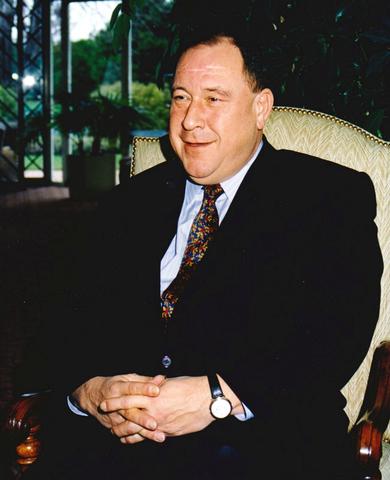
Jean Pierson served as CEO and Managing Director between 1985 and 1998.
Thinking big: A3XX
Later the same year Airbus began talking to airlines about its most ambitious plan yet – to build the world’s biggest passenger jet. The A340 could fly further than the rival “jumbo” but Airbus envisaged a double-decker which could carry far more people than either aircraft. With characteristic vision, Airbus argued that the design of what was then the world’s largest passenger aircraft had barely altered in nearly 30 years. What was needed for the 21st century was an entirely new large aircraft for the increasingly high-density long-haul routes such as Hong Kong-London where passenger traffic was growing relentlessly and capacity was under pressure.
As the idea gathered strength Airbus’ chief rival also began talking about a stretched version of its jumbo. For a while the two manufacturers would even hold discussions about building the new “superjumbo” together. But, as before, these talks fizzled out. Airbus’ position remained steadfast. It was certain a lucrative market existed for what it called the A3XX and, in the coming years, pushed ahead with consultations with airlines, airports, aviation safety authorities and pilots. With environmental restrictions at airports getting tighter, Airbus knew it had to come up with an aircraft which would meet noise and emissions requirements not just for the short-term but with the future in mind.
At the same time its design teams began drawing up a series of versions of what the new aircraft would look like.
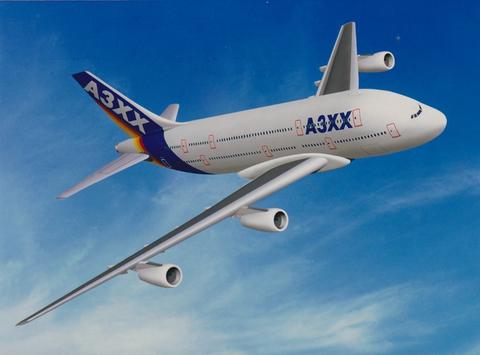
An early rendering of the A3XX, which would be developed into Airbus’ A380.

